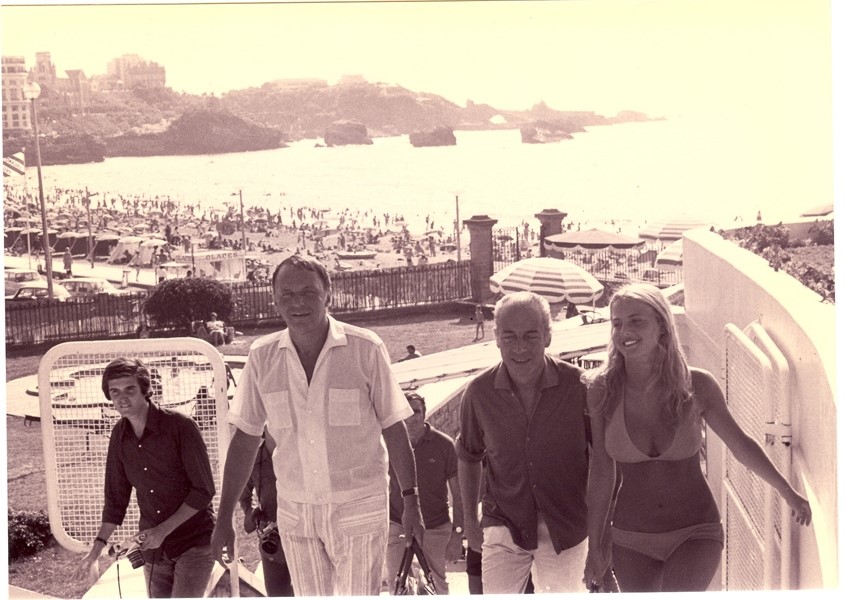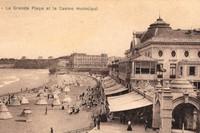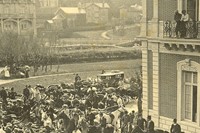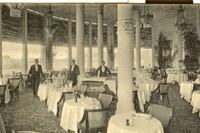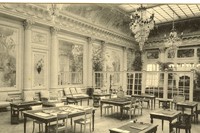In 1830, Victor Hugo stated that he fervently hoped “Biarritz would never become fashionable”, but things clearly turned out differently for Hugo’s beloved seaside town...
In 1830, Victor Hugo stated that he fervently hoped “Biarritz would never become fashionable”, but things clearly turned out differently for Hugo’s beloved seaside town. Today it’s obvious that no one does surfing town chic like the French – Basque coastal gem Biarritz combines its aristocratic lineage with a bohemian spirit, managing to subvert every boardshort surfing cliché around. At the center of the action is the inimitable Hotel du Palais, a grand vestige of old world charm that has attracted everyone from the likes of Ernest Hemingway and Jean Cocteau to Coco Chanel and Jayne Mansfield, along with a host of European nobility, since it was built by Napoleon III in 1854.
The French love affair with Biarritz had an unlikely start. It all began in the early 19th century with a young Spanish girl, Eugénie de Montijo, who visited the town every summer with her mother, the Countess de Montijo, and would spend long, lazy days swimming at the beach with the local children. In 1852, when she was 26, Eugenie met Napoleon III, the future emperor of the Second French Empire, at a ball in Paris, and the pair were married soon after. The wedding created controversy, with gossip columns around the world saying the emperor’s marriage to the daughter of minor Spanish nobility was “humiliating”. Napoleon III famously said, “I have preferred a woman whom I love and respect to a woman unknown to me, with whom an alliance would have had advantages mixed with sacrifices.”
"A grand vestige of old world charm that has attracted everyone from the likes of Ernest Hemingway and Jean Cocteau to Coco Chanel and Jayne Mansfield"
Soon after their wedding, Eugénie brought her husband to Biarritz, where Napoleon III was also seduced by the charm of the small Basque town. He built his wife a summer palace, the Villa Eugénie and the couple spent 16 summers in Biarritz where they entertained most of Europe’s kings and queens in a succession of balls, picnics and firework displays, interspersed by the odd diplomatic meeting. There were even regular séances held at the Villa, when spiritualism became increasingly fashionable.
In 1870 Napoleon III was defeated in the Franco-Prussian War and France’s Second Empire was replaced by the Republic, ushering in a new era for the Villa Eugénie. The Banque Parisienne bought the Villa in 1883, and transformed it into its current incarnation, the Hotel du Palais, where it became the setting for the grandeur of the Belle Époque. The hotel continued to play host to huge numbers of royals, including Queen Victoria and the Habsburgs, as well as the tragic Empress Elisabeth of Austria, “Sissi”, who has an Imperial suite in the hotel named after her. Every October “Russian Season” would sweep through Biarritz, and the Grand Dukes and their extravagantly adorned wives would stay at the hotel. In World War I, the hotel became a hospital for wounded soldiers, and after the war finished, the Roaring Twenties marked the beginning of a new generation of guests. The new “royalty” were stars from the worlds of film, art, music, fashion and literature, with everyone from Sarah Bernhardt and Igor Stravinsky to Charlie Chaplin and Jean Cocteau coming together for epic parties in the French resort. Ernest Hemingway stayed at the hotel and ended up writing Biarritz into his acclaimed novel The Sun Also Rises about the Lost Generation, and Ava Gardner starred in the 1957 film adaptation of the book, which was partly filmed at the hotel.
“Whenever one hesitates between two resorts, one of them is always Biarritz"
The hotel continued to play a role in history – in 1940, during the Second World War, the German army stayed at the hotel for several months while their leaders planned to invade Gibraltar, but Franco’s reluctance to allow Germans on Spanish soil terminated their plan. The 1950s marked another optimistic post-war period, with great themed galas and firework displays taking over the Hotel du Palais. The new Hollywood film and music stars of the day – Frank Sinatra, Jayne Mansfield, Bing Crosby and Gary Cooper – all came to stay at the hotel, helping establish Biarritz as the European summer destination.
Although it’s been 158 years since the Hotel du Palais was built by and for royalty, you’d be hard pressed to find anything less then palatial about the hotel today. The hotel’s suites and rooms are decorated in lavish period furnishings, guests choose from three restaurants (one has a Michelin star, another offers a panoramic view of the Atlantic), there’s an award winning spa, a beachside swimming pool, and the hotel has recently been designated a “Palace” by the French Government, a highly covetable accolade that even the Ritz Paris recently missed out on. The hotel also offers easy access to the charms of the surrounding Basque culture, and then of course there’s the surfing, which is best in Europe.
Renowned French actor Sacha Guitry once wrote in the Hotel du Palais guestbook, “Whenever one hesitates between two resorts, one of them is always Biarritz,” and it doesn’t look like this is about to change anytime soon.
Text by Karen Orton
